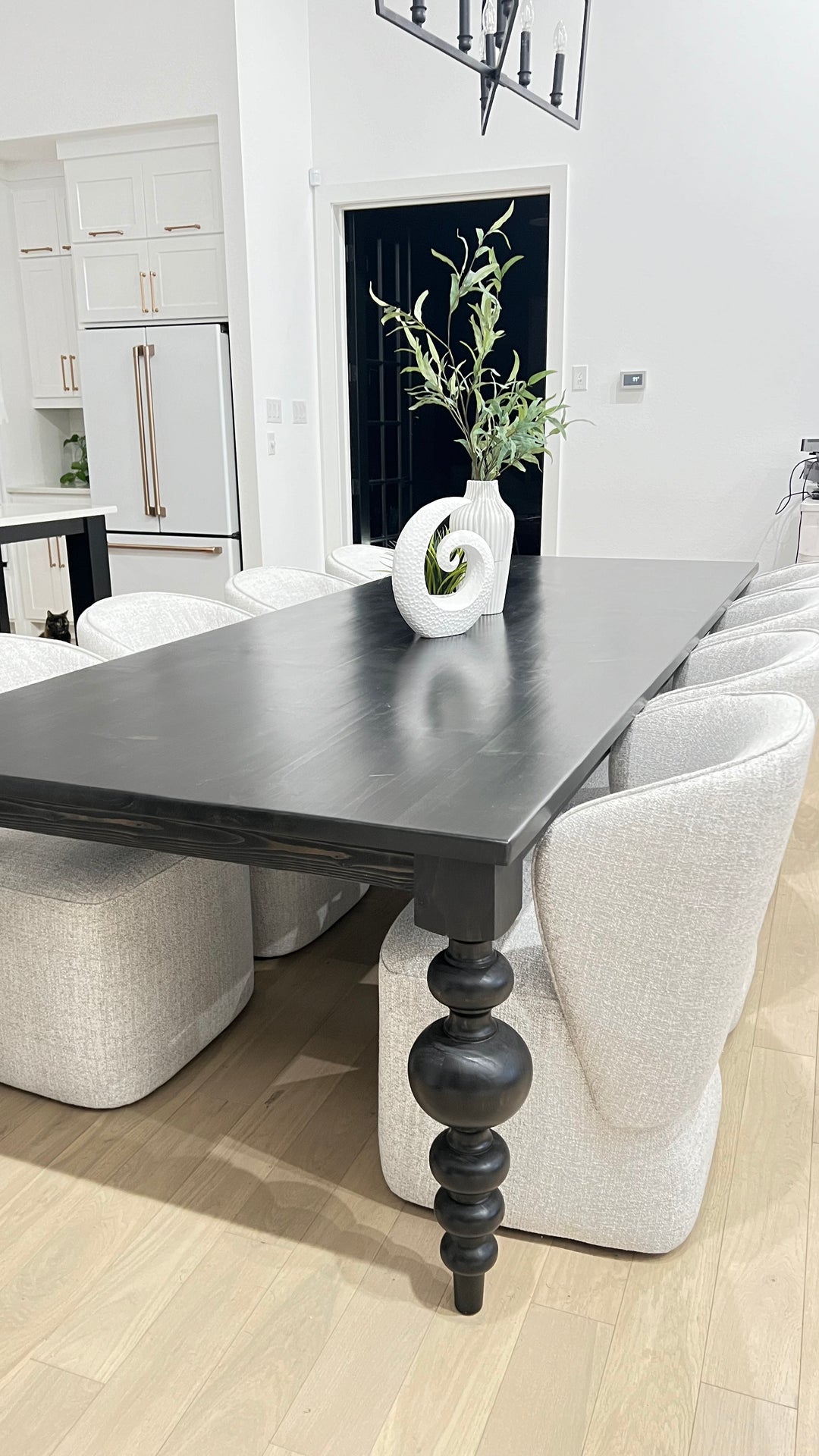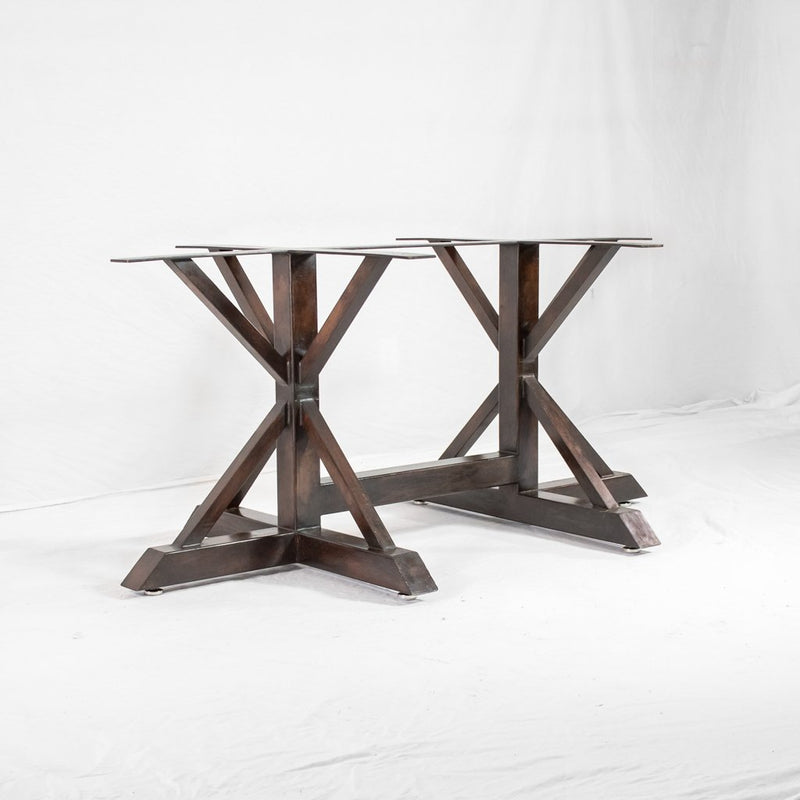How Dining Room Table Legs Can Change the Entire Aesthetic of Your Room
How Dining Room Table Legs Can Change the Entire Aesthetic of Your Room
Blog Article
Just How to Choose the Perfect Dining Space Table Legs for Your Home Décor
Choosing the suitable eating room table legs is a nuanced procedure that requires cautious factor to consider of different aspects, including your room constraints, aesthetic preferences, and useful demands. The interplay between dimensions, styles, and materials can considerably influence the atmosphere of your eating location, making it vital to approach this choice systematically. As you consider the myriad alternatives readily available, it becomes clear that the right choice extends beyond mere appearance; it can improve your general dining experience. What factors should you prioritize to guarantee your selection matches your home's one-of-a-kind personality?
Assess Your Dining Room
Examining your dining room is essential for selecting the right table legs that enhance both appearances and performance. Begin by measuring the measurements of your dining location, including ceiling elevation, floor room, and distance to various other furnishings. This info will aid identify the ideal size and elevation of your table, which straight affects the option of table legs.
Next, take into consideration the style and layout of your dining area. For example, an open-concept style might benefit from table legs that use aesthetic agility, such as slender metal or acrylic choices. On the other hand, a more conventional setup could call for durable wood legs that supply a feeling of durability.
Evaluate the existing color combination and products in your eating location. Balancing the table legs with these aspects develops a natural appearance that boosts the overall decor. Furthermore, think of the capability called for in your space. If you often organize huge celebrations, take into consideration legs that give extra support and stability.
Inevitably, a comprehensive assessment of your eating room will certainly assist you in making a notified decision, ensuring that your table legs not just boost the visual appeal but additionally offer functional purposes.
Consider Your Design Preferences
When picking dining-room table legs, it is important to review your individual style preferences, as they significantly affect the general aesthetic of your eating area. Your choice of table legs can either enhance or contrast with existing decoration, making it crucial to straighten them with your favored interior layout style.
If your home leans towards a modern visual, consider streamlined metal or minimal wooden legs that provide a tidy, uncluttered appearance. For a much more traditional strategy, ornate wood legs with elaborate makings can add a touch of style and class. Industrial styles profit from durable, basic materials such as reclaimed wood and steel combinations, mirroring a rugged appeal.
Additionally, farmhouse and rustic designs frequently prefer sturdy, chunky legs that stimulate a sense of warmth and convenience. On the other hand, if your decor is eclectic, you may pick non-traditional forms or a mix of materials to produce aesthetic interest.

Evaluate Material Options
The selection of material for eating space table legs plays a crucial role in both toughness and visual charm. Common materials include timber, steel, and composite alternatives, each offering unique characteristics that can influence the total look and durability of your table.
Timber is a timeless selection, recognized for its heat and versatility. Hardwoods like oak and walnut provide extraordinary stamina and can be completed in different spots to match any type of design. Softwoods like ache are a lot more susceptible to scratches and dents, making them much less suitable for high-traffic areas.
Metal legs, frequently crafted from steel or aluminum, exude modernity and commercial appeal. They are extremely resilient and resistant to wear, making them ideal for family members with children or regular events (dining room table legs). Additionally, steel can be completed in various shades, improving the personalization possibilities
Composite products, such as MDF or laminate, offer affordability and varied styles. While generally less sturdy than solid wood or steel, they can still offer a stylish look and are frequently very easy to preserve.
Ultimately, the product you choose need to line up with your lifestyle, visual preferences, and the degree of use your eating table will experience.
Determine Elevation and Size
Choosing the appropriate elevation and size for your dining-room table is necessary for both performance and comfort. The common height for dining tables usually varies from 28 to 30 inches, enabling ample legroom for the majority of individuals when seated. However, it is essential to think about the measurements of your eating area and the types of chairs you plan to make use of.

In addition, about his think about the their explanation proportions of your eating space. A bigger table in a large area can produce a grand setting, while a smaller table functions well in even more intimate settings. Inevitably, the ideal height and size will certainly harmonize with your general decoration and improve the dining experience for you and your guests.
Explore Customization Possibilities

Additionally, the design of the legs can be tailored to fit different designs, such as rustic, contemporary, or commercial. Tapered legs can evoke a mid-century modern-day feel, while beefy, block-style legs may reverberate with traditional or farmhouse decor.
Homeowners can additionally discover shade surfaces, from natural wood stains to paint, enabling them to match or contrast with the table top and surrounding decoration.
Additionally, leg height can be adapted to accommodate particular seating arrangements or individual choices, improving both comfort and capability.
Lastly, distinct embellishments, such as makings or decorative braces, can additionally personalize the table legs, making the eating experience not just a meal yet a declaration piece in the home. By thinking about these customization choices, homeowners can produce a dining-room table that absolutely reflects their uniqueness.
Verdict
Selecting the optimal dining-room table legs requires cautious consideration of numerous factors, including the dimensions of the eating room, design choices, material toughness, and wanted height. Modification options additionally boost the capacity to achieve a cohesive aesthetic that complements the overall decoration. By methodically reviewing these components, homeowners can guarantee that the chosen table legs not only satisfy practical demands however additionally contribute positively to the dining experience and ambiance of the home.
Selecting the optimal dining space table legs is a nuanced procedure that calls for mindful factor to consider of different aspects, including your area restrictions, aesthetic preferences, and practical needs.Evaluating your eating space is essential for choosing the right table legs that match both looks and functionality.When identifying dimension, determine the area where the table will certainly be placed to ensure it fits easily, allowing for at least 36 inches of clearance around the table for easy movement. A bigger table in a large area can create a he said grand setting, while a smaller sized table works well in even more intimate settings.Picking the excellent eating room table legs requires mindful consideration of various variables, including the dimensions of the dining room, style preferences, product sturdiness, and desired elevation.
Report this page